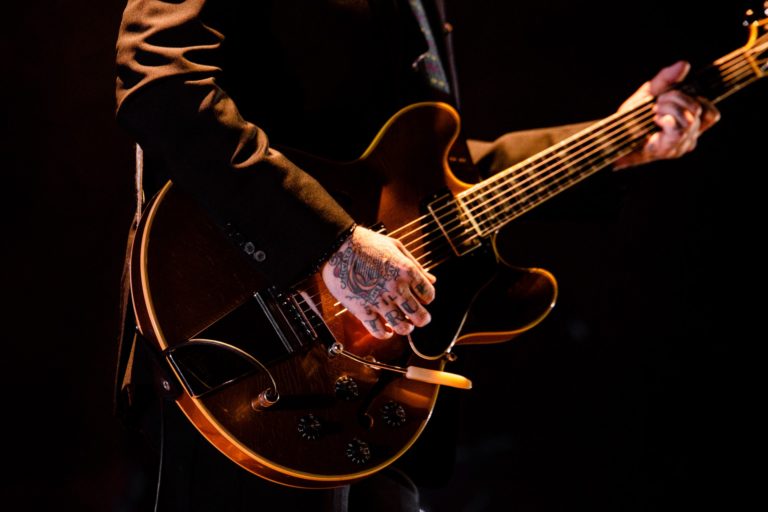How to Make a Stage Plot and Input List
Knowing how to make a stage plot and input list is critical for any act before a show begins. It is an essential failsafe for both the band and stage crew to set everything up correctly.
Learning how to make a stage plot involves identifying everyone who will be on stage as well as what gear is being used and how everything connects for a show to go ahead.
For anyone involved with the show, the stage plot gives them a key indicator of what goes where. It is an aid that is designed to benefit everyone in the venue.
Getting something like this right can be tricky though especially if your crew or bandmates have differing opinions on setup. So just what are the top tips for knowing how to make a stage plot?
What is a Stage Plot?
Essentially, a stage plot is a visual representation of the stage’s appearance and just who and what equipment will be located where.
This visual guide, usually laid out by the tour manager or stage crews, identifies everything that needs to be set up including all the instruments, gear and other notes needed for putting a show together.
But this is just the starting point of why a stage plot is a critical part of the setup process. That’s something underlined by Celine Erling of TecRider.com – a stage plan design platform for musicians. She underlines some of the key points of a stage plan such as
- Communication: “It helps ensure that everyone involved in the production understands the layout and requirements for the performance.”
- Efficiency: “A stage plot helps streamline the setup process saving time during soundchecks and minimising any confusion or delays.”
- Safety: “Clear communication of the stage layout helps prevent accidents or mishaps ensuring that everyone involved is aware of potential hazards and can take appropriate precautions.”
- Consistency: “For touring musicians who perform at multiple venues, having a standardised stage plot ensures consistency across different locations. This helps maintain the desired sound and performance quality regardless of the venue.”
Understanding these principles upon arrival makes knowing how to make a stage plot that much easier for an upcoming show – regardless of who or where it is for.
What is an Input List?
Unlike a stage plot, an input list is used to specify the audio signals that need to be routed to the mixing console. It provides a detailed overview of all the audio sources (inputs) that will be used during a live performance or recording session.
This is something that is highlighted by Dave Rook from Stage-Plan, a leading stage design platform, who outlines how an input list should work.
“Artists (or their stage engineers) set out their expectations of where they would like the feed from each microphone or instrument to be inserted into the FoH (front of house) desk. They will also include additional information, such as a preferred microphone, if phantom power is required, any effects (such as compression or gates) and any extra information eg a. boom stand type.”
Following this information gives the setup crew everything they need to get the settings right for the show ahead. They can then go ahead and make alterations after the sound check should something go awry.
Best Practices for Stage Plot & Input List Design
Knowing just what to include in a stage plot & input list might seem tricky. Especially as getting it wrong could make or break a show. That’s why learning how to make a stage plot can seem hard to first-time planners. So what are some of the strategies that can help avoid feeling overwhelmed before a show?
Be Fluid
What is particularly key is remembering that the design isn’t concrete and there’s always room for interpretation. It’s something that Rook puts a big emphasis on when planning.
“Artists should not worry if the representation isn’t perfect. This should allow the engineer to understand at a glance what you’re after.”
“It may be the shape of the guitar is different to the one you play. Even if the drummer has an extra tom compared to the drum shown on the stage plot, there is no need to worry as this detail can be sorted in the input list,” he adds.
Chat with the Venue
Another thing to consider when putting your outline together is knowing what works best for the venue you are playing in. After all, there’s going to be a big difference between what works for a small bar show to playing in a large auditorium.
Reaching out to the venue is something that Rook highlights as a key point for putting together an effective stage plot.
“Chat to the venue and learn what their limitations are. There is little point in sending a 64-channel input list to a venue that is set up for 16 channels! Doing so will just waste your and their time.”
“Do whatever you can to make it a success for both parties. Venues typically prefer working with bands like this and I’d suspect they’re more likely to ask you back if you’ve made that effort with them,” Rook adds.
Mistakes to Avoid on a Stage Plot & Input List
As much as doing the right things makes setting up the show easier, taking the wrong approach makes life difficult for all at the venue. So what should you avoid doing when putting together a stage plot or input list?
Don’t Leave it to the Last Moment
Like anything, leaving things to the last moment is playing with fire. When it comes to a stage plot, doing this last leaves you with no room for error. This means that if something does go wrong – there’s no way to rectify it in time.
“This is when things go wrong,” Rook elaborates. “Send your plot and input list in early so they can review and ask any follow-up questions.”
“The venue would rather you make mistakes way in advance so they have time to chat about this rather than having to make last-minute changes,” he explains.
Balance of Information
What can also be difficult is finding the balance between the right amount of information and the incorrect amount. Doing either of these can then make the plot and list difficult to follow for the tech crew.
This is outlined by Ms Erling from TecRider who explains the impact of having the wrong amount of information.
“Keep the stage plot clear and concise. Unnecessary details may make it difficult to interpret or follow,” she remarks.
On top of that, she also stresses the importance of having accurate information on the plot itself. Not only does she emphasise that it “avoids overcrowding or insufficient space during setup” but it also “prevents technical issues during the performance.”
How to Make A Stage Plot
At the end of the day, knowing how to make a stage plot is something that is only going to aid in setting up a show. It gives both you, your crew and the venue an idea of what is going down as the night unfolds. By putting it together, you get a feel for how a show might look and feel. This then aids in putting together the input list so everything sounds perfect.
When creating the plot, keeping everything clear is imperative for the best setup. It’s also worthwhile liaising with the venue so you know what is the best approach for your upcoming show. Doing this with plenty of time avoids any avoidable drama and mistakes being made. That’s why putting these lists together is important. Therefore, knowing how to make a stage plot only makes life easier when out on the road.
Special thanks to Dave from Stage-Plan and Celine from Tecrider.









